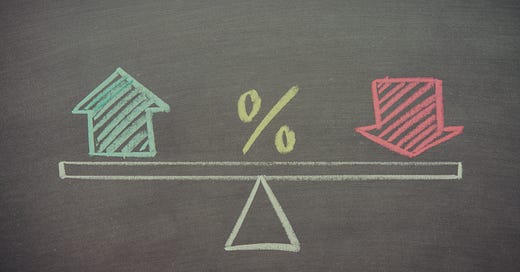What's Making Banks Fail? What Could Save Them (and Us)? A Flex Lending Approach I Proposed to Hank Paulson in 2008?
The Fed is an ancient economic device from 1913. We can do better.
A few years ago, I nearly prevented the 2008 “recession” with a phone call to then Secretary of State Hank Paulson. It was the era of toxic debt salad.
I had heard on a Friday afternoon that Paulson had “invited” all of the CEOs of major banks - those in trouble and those not in trouble.
“Please promise me you’ll get this message to him” I urged his secretary.
“I personally guarantee you I will hand him your message” came the reply.
The next Monday, now recalled as Black Monday, Paulson force-fed hundreds of billions of dollars of loans from the Fed to banks who needed it - and to those who did not.
If Paulson had understood what I described to him - if he had called me over the weekend - hundreds of thousands of foreclosures could have been avoided.
My plan was all carrot and no stick. Offer, I suggested, the billions in loans to those who need it - and to be fair, to any and all lending organizations - under a sliding scale of terms.
The lower the interest rate banks offered to their customers, the longer the payback terms and the lower the interest for the banks to pay back the billions in Fed loans.
Back then, liquidity was key to saving the US economy.
Paulson did the opposite: All stick, no carrot.
A four-month lending freeze set in, and hundreds of thousands of Americans lost their homes.
Now, as we see regional banks failing, the public waking up has to wonder why. Read Trump or his supporters, it’s Biden. Read Biden, supporter, it’s Trump’s policies.
Wall Street knows the truth: the Federal Reserve's aggressive interest rate hikes will continue to roil regional banks until the yield.
My idea of sliding scale terms from 2008 will allow banks to find their own “sweet spot”, where everyone wins: The banks do not default, the bank profit, and borrowers cut a deal on their loans and some spending relief.
The Fed’s one-size fits all approach is cruel and befitting of 1913 thinking. We can be far better.
What’s needed is modeling to define the range of realistic terms variation. For every x points reduction in interest rates to debt consumers, the banks receive y additional months and z additional points off interest in their payback terms to the Fed, with x, y, and z bounded by the Fed. Flex lending instead of fixed terms. Better yet, terms negotiated consumer by consumer, allow the bank and the loan product consumer to learn to optimize their strategies.
How will the banks react? Lending freeze? No. Recklessness? No. How will consumers act? Borrowing frenzy? Recklessness? Perhaps. But they will have less to risk and more to gain.
I have to stress that getting x, y, and z right will be essential. So we truly need models to identify the “Do Not Go Here” zones. We need data; we cannot theorize about this new ecosystem until we try it out.
In an era where AIs trade microtransactions at a mind-bending rate per minute, surely, we could find a way to make the one commodity that banks have to offer - their interest rates and payback terms - accessible to market forces, enlisting consumer competition. The banks would be able to use their profits to improve interest payments to consumers on savings accounts, CDs, and other short-term low-risk investment products that could keep the juice flowing.
If anyone at the Fed is listening - if Janey Yellin, the US Secretary of Treasury is listening - if economists are listening - do the agent-based models, and let’s find out what flex loaning would do to alleviate the tensions.
What makes me feel like I’m whispering in the wind?





They won't listen to your advice. This was planned and set in motion long ago. The New World Order cant come to fruition without the bank and economic collapses!
If they would want to save USA from a financial crisis they would. They wanted to destroy America and they quite succeeded. They are not stupid they are evil.